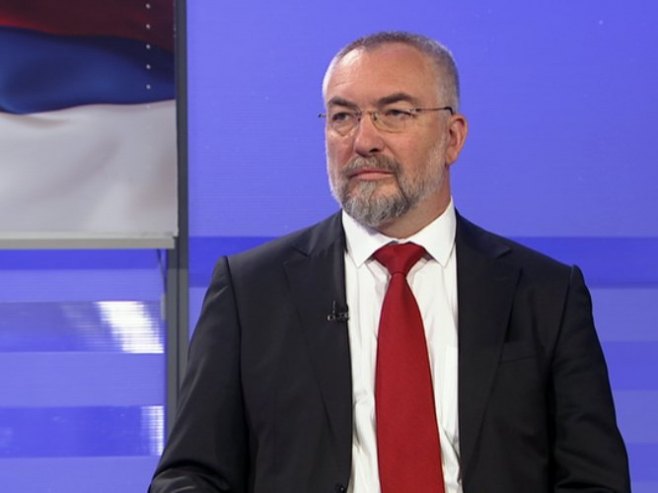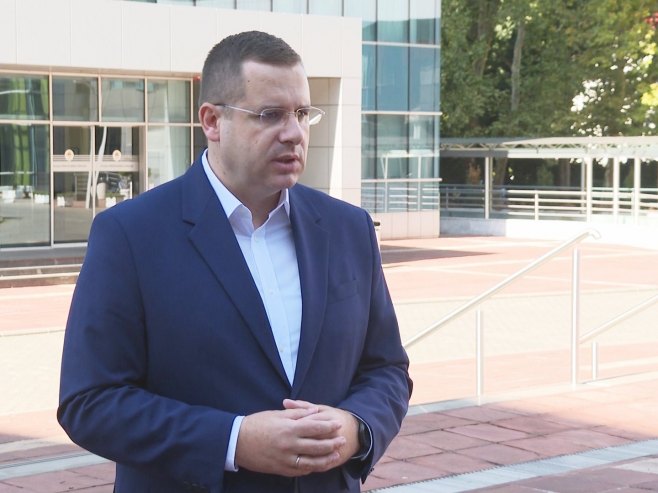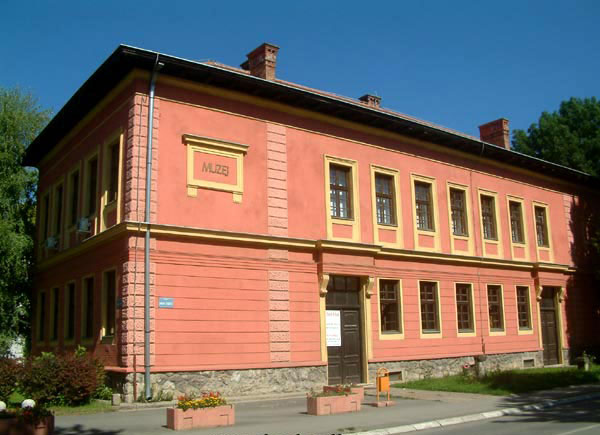The director of the Center for Socio-Political Research of Republika Srpska, Dušan Pavlović, stated that Republika Srpska has been waging a decisive battle for 29 years to preserve the negotiated and ratified international peace agreement, despite having relinquished a significant portion of its historic territories, defended during the first European proxy war after 1945, in Dayton.
“The same destructive forces that pushed Ukraine through [Ukrainian President Volodymyr] Zelensky into devastation, and are now leading all of Europe towards self-destruction, have continuously attempted to destabilize Bosnia and Herzegovina by undermining the Dayton Peace Agreement,” Pavlović said.
Pavlović emphasized that the international peace agreement, initialed in Dayton 29 years ago, brought an end to the armed part of the first European proxy war, while the then Zelensky figure—[Alija] Izetbegović—effectively gained 23% of the territory, bolstered by promises from those who dragged him into war that he would eventually gain control of all of Bosnia and Herzegovina.
“From that very moment, efforts to dismantle the specific peace agreement and its annexes began. These annexes, which were negotiated and finalized by the warring parties—Republika Srpska and the Federation of Bosnia and Herzegovina—serve as international agreements,” Pavlović noted.
He added that each annex has the status of an international treaty, meaning that Republika Srpska and the Federation of Bosnia and Herzegovina are the interpreters of these agreements, including Annex 4, which functions as the Constitution of Bosnia and Herzegovina.
“These two entities played a key role in negotiating and agreeing on the final version of Annex 10, which clearly defines the role of the High Representative. As such, Republika Srpska and the Federation, as signatories to the Dayton Peace Agreement and its annexes, have the capacity and obligation to interpret Annex 10, as they were the ones who negotiated its provisions,” Pavlović said.
He pointed out that, shortly after the ratification of the Dayton Peace Agreement, an informal diplomatic group—the so-called Peace Implementation Council (PIC)—unlawfully intruded upon the jurisdiction and mandate of the UN Security Council, initiating the dismantling of this international peace agreement.
“The key PIC member states have politically occupied Bosnia and Herzegovina, systematically undermining the international peace agreement that ended the war and ensured peace in Bosnia and Herzegovina as established by this agreement. Complicit in this violation of peace were the High Representatives, who used the so-called Bonn Powers to undermine the international agreement ratified by the UN Security Council,” Pavlović explained.
In this context, he added, actions by the Constitutional Court of Bosnia and Herzegovina that contradict Annex 4, the political trial against Republika Srpska President Milorad Dodik, as well as actions by the Court and Prosecutor’s Office of Bosnia and Herzegovina, constitute direct violations of the international peace agreement and international law, leading to further instability and potential conflict.
“It is crucial to remember that the Dayton Peace Agreement was verified by the UN Security Council, and any significant violations or deviations from its provisions, including Annex 4 as an international treaty functioning as the Constitution of Bosnia and Herzegovina, could eventually draw the interest of the Security Council, which holds the authority to ensure the implementation of peace agreements concerning international peace and security,” Pavlović said to Srna.
The General Framework Agreement for Peace in Bosnia and Herzegovina, along with its 12 annexes, was initialed on November 21, 29 years ago, ending the war in Bosnia and Herzegovina and establishing its constitutional and legal order.
This agreement created the state union of Bosnia and Herzegovina, composed of two entities, Republika Srpska and the Federation of Bosnia and Herzegovina, both signatories of all annexes.
The Dayton Agreement was officially signed on December 14, 1995, at the Élysée Palace in Paris.
С
Source: RTRS









